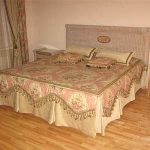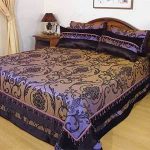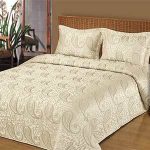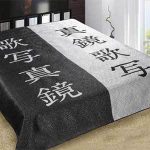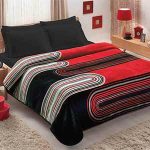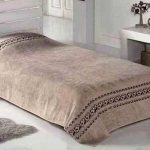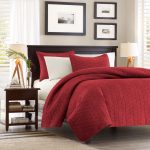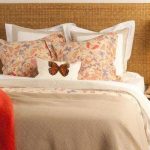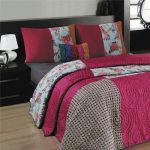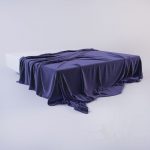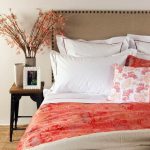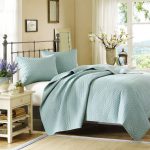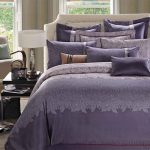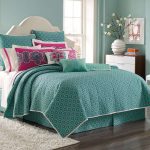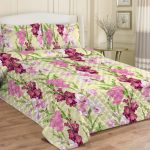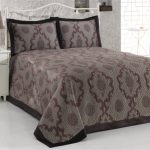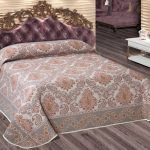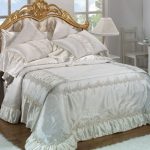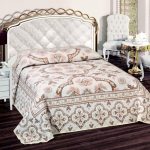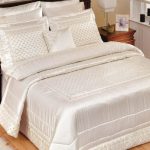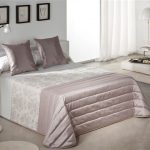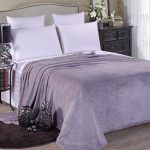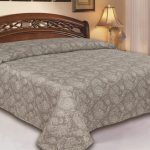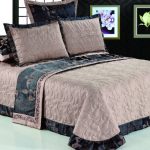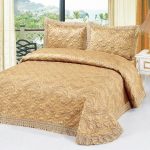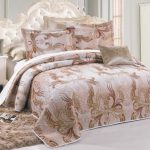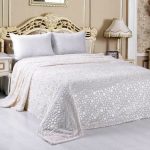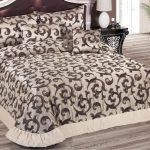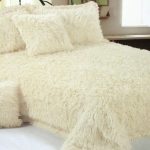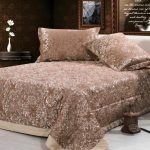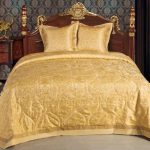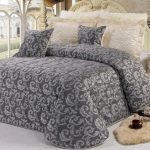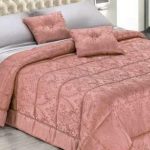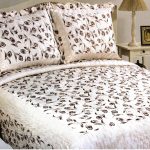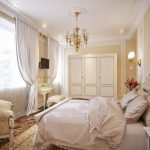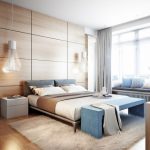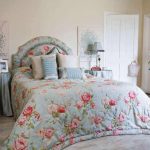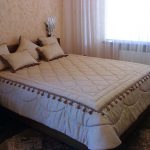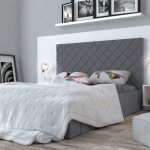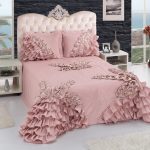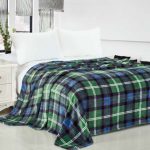Tips for choosing fabric for bedspreads
A sign of competent design of any interior is skillfully selected textiles. Curtains, bedspreads, napkins sound a powerful chord in a symphony of stylish space. Therefore, it is important to withstand the edge of taste, selecting the fabric for the bedspread.
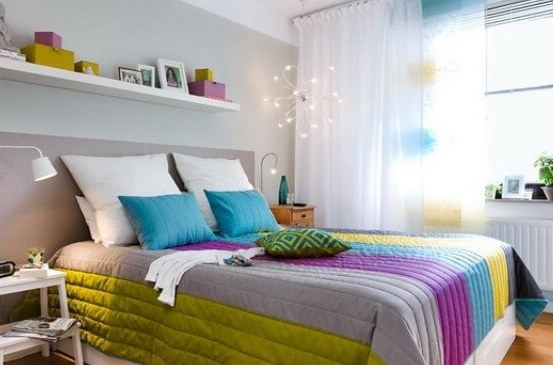
The cover intended for registration of a bed, will decorate, will make a cozy bedroom
In order for a blanket to please, when choosing it, they are guided by the peculiarities of the fabric, it must meet the following requirements:
- to have dense weaving then the product will keep a form;
- make mechanical loads, to be resistant to abrasion, burnout;
- maintain aesthetic appeal after repeated washes.
Before buying, they measure the size of the bed, add on each side as many centimeters as is required for the cover to hang on the side. This simple technique allows you to hide bedding, mattress. Designers use some tricks to emphasize the beneficial properties of the room, to hide unwanted features.
- If the room parameters are disproportionate, correctly located strips of the picture will help to visually normalize the appearance.
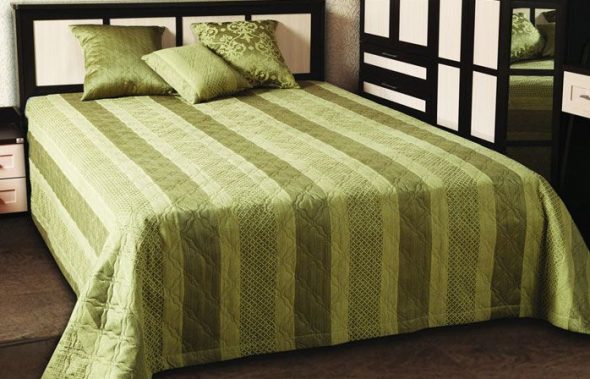
A veil with stripes in length will lengthen the room visually.
- Monochrome cover must be in harmony with the curtains, upholstered furniture, carpet, walls.

Monochrome burgundy jacquard cover in perfect harmony with the curtains in the same color
- If the room has a lot of light, choose cool shades of color. If the room is dark, warm colors are recommended.
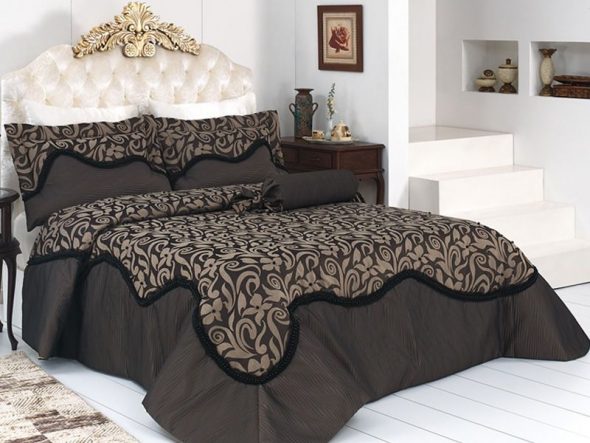
A dark bedspread in a bright bedroom creates a certain contrast and adds zest to the interior.
- If all the details of the room are made in shades of the same color, it is better to choose matter in the same range, but with a pattern.
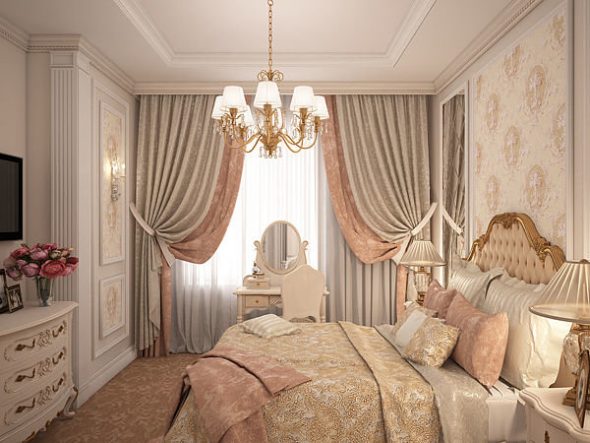
Elegant bedroom with a properly selected combination of curtains and bedspreads in the same color scheme
- Decorating with a fringe, tassels will create problems for families with cats. Purrs will certainly start to play with funny decorative elements and tear them off.
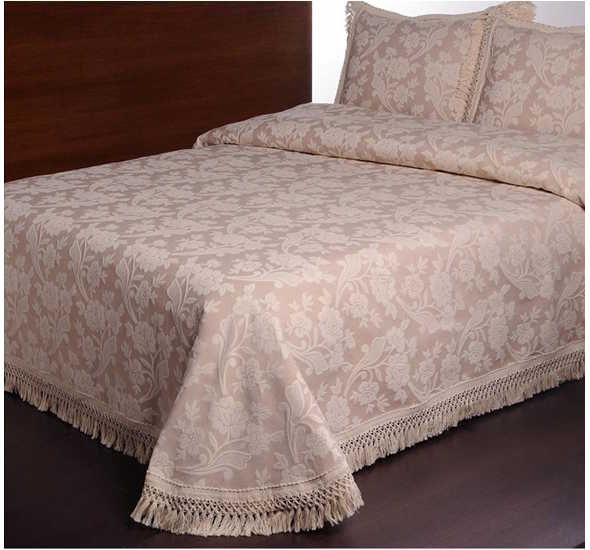
Gentle cotton bedspread on the bed with a fringe on the edge
The properties of the main fabrics, which are commonly used in interior design, are described below. Acquainted with the main advantages and disadvantages of these varieties, everyone can choose the optimal matter, corresponding to their individual conditions.
Content
Basic fabrics for bedspreads
Acrylic

Acrylic covers are durable and durable and have the widest selection of colors and patterns.
Modern living conditions, the need to save time, money involves the use of artificial finishing materials in the living space, textiles are no exception. Synthetics in the design of the bedroom minimizes the financial costs of the acquisition, care, serves for many years. It is simple to wash an acrylic cover, drying will take a little time.
Lightweight acrylic can even children, to store enough small space in the closet.The boundless range of colors, breadth of design allows you to stylishly decorate any bedroom. The main "minus" of acrylic - the formation of pellets. Matter will retain its decent appearance longer when special detergents are carefully selected. With the accumulation of static electricity more difficult, the process does not stop.
Atlas
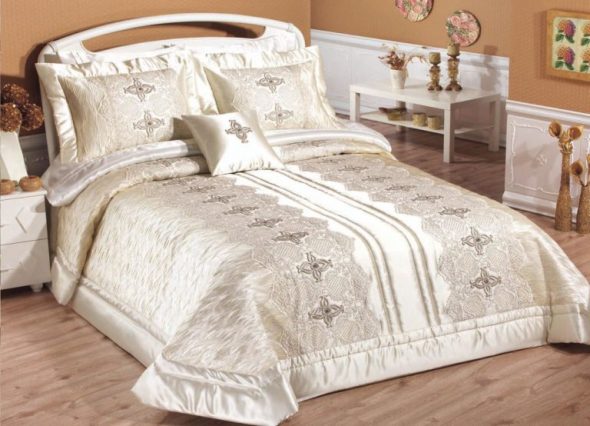
Bedroom satin cover - light, beautiful and romantic option
Spectacular appearance makes the satin fabric for bedspreads the best design solution for elegant bedrooms. The bed, covered with a perfectly smooth satin, seems neat, the bedroom takes on a sophisticated look. Just using smooth fabrics with silk bedding is a bad idea. The bed will always be untidy: a bedcover slips from it.
Atlas requires a special approach. Minimal negligence leads to the formation of overt stains. Moisture provokes unpleasant stains.
Bamboo
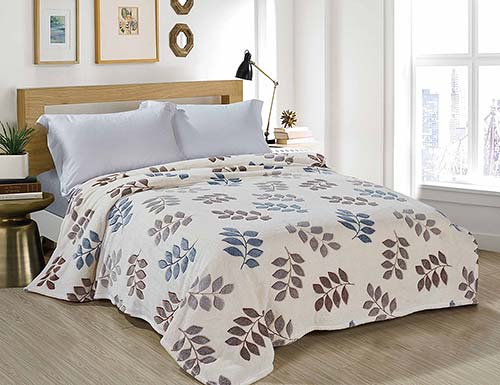
Bamboo cover - eco-friendly and inexpensive option with a pleasant texture.
The natural, natural base makes bamboo widely sought after. A wide range of colors allows you to complete any interior decision. This matter is usually thin, so any housewife will wash the bamboo blanket without any problems. Storage rules are extremely simple. The rolled thing occupies a minimum of space.
Bamboo has antibacterial characteristics, is able to absorb moisture, unpleasant odors, eliminate them. Dust does not linger on it. The air passes easily without creating a greenhouse effect.
Velvet
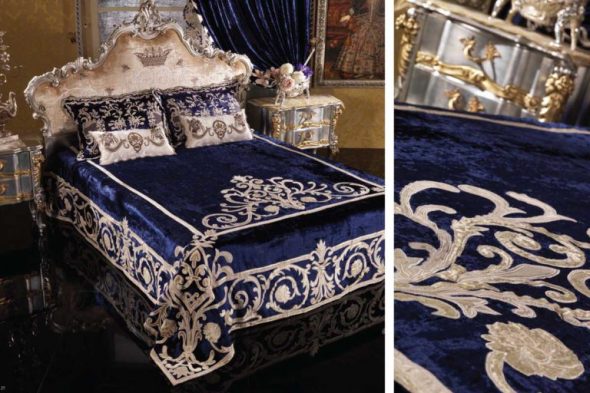
Velvet bedspreads are fluffy, soft, pleasant to the body, but quickly wear out
The people velvet grows over the years. Chic appearance, pleasant texture leaves no one indifferent. But choosing the fabric for bedspreads on the bed, avoid natural velvet. The cost is too high, and abrasion resistance is minimal.
If no one will sit on the bed, go to bed, velvet is fine. He is able to perform only a decorative function. In order to keep the stylistic unity, it is recommended, in addition to the bedspread, to make one more textile detail of the interior of this room velvet. But if you use a few velvet details in a small bedroom, you get bad taste. Compliance with the measure - the basis of style.
Viscose
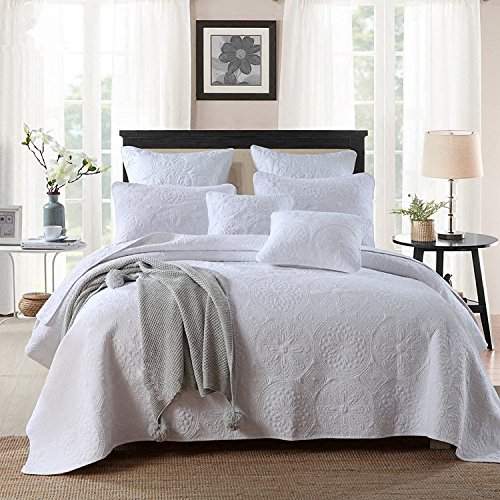
Viscose bedspreads in the bedroom are considered the most natural option among artificial
The basis of viscose - natural material cellulose. Therefore, it is pleasant to the touch like cotton, but practical as polyester. Low weight, wide range of colors, decorative - the main advantages that make viscose one of the best foundations for the production of bedspreads.
When buying, take into account the viscose property to decrease after washing. If you decide to sew the furniture for the bed with your own hands, before opening the viscose, it is washed, dried, then subsequently unpleasant surprises will be excluded.
Tapestry

Tapestry bedspreads - real works of art that came to us almost "from time immemorial"
Tapestry - a traditional matter, which decorated the interior in the era of the Middle Ages. In Soviet times, almost everyone had tapestry blankets. At the turn of the XX - XXI centuries, this tissue variety lost its relevance. Recently, however, more and more often designers are turning to it, trying to give the bedroom or living room a finished look.
Professionals use tapestry with great care. After all, he has the ability to visually reduce space. In small bedrooms tapestry is not appropriate. But in the spacious rooms dominated by the classics, the tapestry canvas will become the embodiment of prosperity and stability.
Jacquard
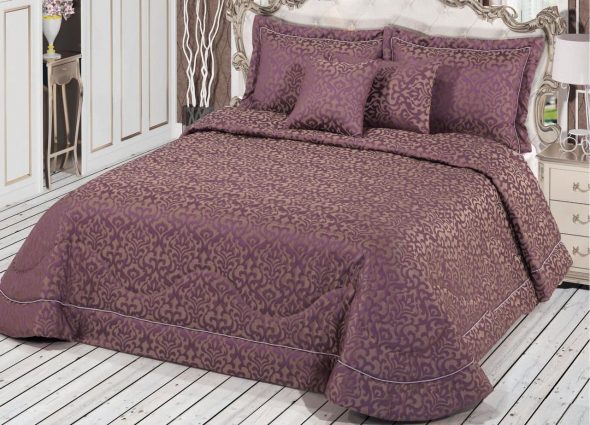
Jacquard bedspreads are easy to maintain, wear resistant and preserve rich colors
Expensive jacquard fabrics are distinguished by large ornate patterns.Jacquard is made from both natural and artificial threads. This is a classic option for sewing home textiles. Among the advantages of jacquard things, experts note the strength, beneficial effects on the body, durability, hygroscopicity. But the main thing - aesthetic appeal. The main problems are associated with high cost, difficulties in care. If the thing is made from natural materials, in particular from wool, allergic reactions are possible.
Fur
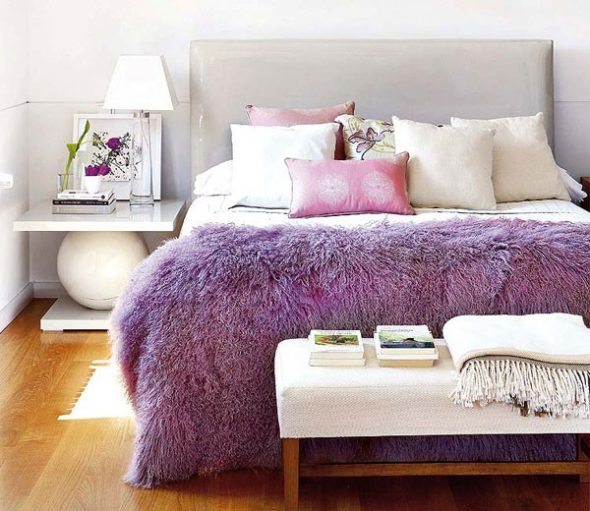
Fur bedspreads look rich and expensive
Fur fabrics for bedspreads are the epitome of chic. Having picked up the necessary shades of color, it is easy to fit them into any style of an interior. This option is suitable for people with special status claims.
If opportunities are limited, it is better not to use fur. The main difficulty - in the care. A long pile, hairs get dirty, quickly become unattractive, so you have to regularly use dry cleaning. There are no other options to preserve the original beauty of the fur.
Microfiber (velsoft)
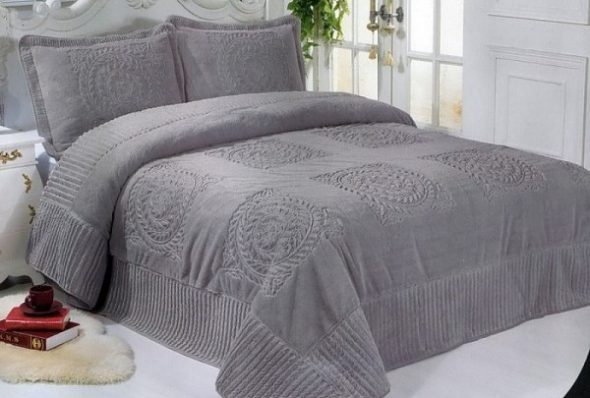
Microfibre blanket made of ultrafine fiber, characterized by high durability
The advantage of this thin matter of artificial fibers is extremely low cost. The price of products from it turns out noticeably lower than the counterparts from another material. However, a bed decorated with microfiber products loses, its aesthetic appeal is lower. The appearance of the whole interior becomes less refined. If the cover quality, the price of it will be very high.
Fleece

Fleece bedspreads are warm, soft, light and allergy-friendly.
Fleece has a pleasant texture, a huge number of shades. Low cost attracts a large number of consumers. However, quickly emerging pellets cause great frustration. Among other shortcomings - the tendency to the formation of static electricity, the deterioration of characteristics upon contact with high temperatures.
Cotton

Eco-friendly and natural cotton bedspreads are well suited for the summer season.
If the cotton fabric on the blanket is made without artificial additives, it is pleasant to the touch, but not durable. With repeated washings, it will shed, lose its visual appeal. Other disadvantages of cotton fabrics:
- crumple;
- sit down after washing;
- hard ironed.
Among the advantages are the benefits for the body, light weight, small volume in a collapsed form, hygroscopicity, hypoallergenic. Today, coarse calico, satin, poplin, chintz, and taffeta are made from cotton. The first three are widely used for the production of bedspreads.
Silk
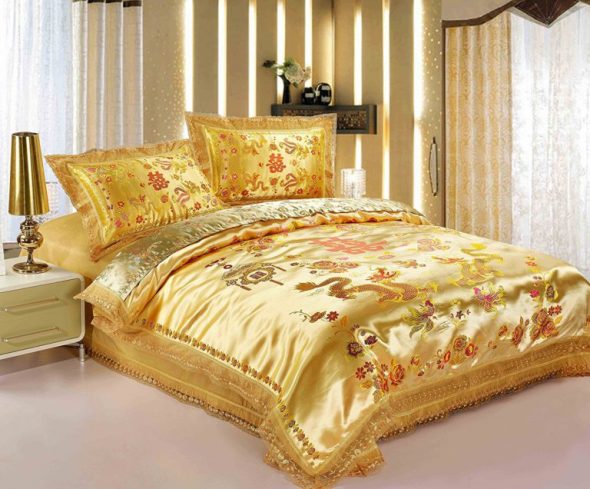
Beautiful and expensive silk bedroom bedspread
The sophistication of silk is great for creating an intimate atmosphere. Do not worry about durability. Natural silks are known for their resistance to UV light. But silk reacts negatively to water with detergents. Among the difficulties is the need to wash the product manually. Since the silk fabric cover weighs little, it will not create big problems. But dry cleaning is more appropriate, because water provokes unattractive divorces.
Wool
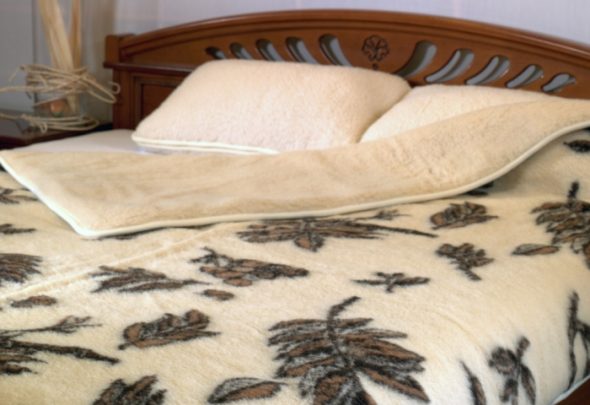
Wool blanket covers comfort and warmth even in the coldest months.
Wool always looks presentable, creates comfort. Usually used woolen fabric for rug, which cover the bed. Therefore, this is the best option for those who seek to get rid of excess, to minimize the number of things. However, products made of natural wool have considerable weight, which creates inconvenience when it is necessary to wash and dry.
The optimum variety is a material with the addition of artificial fibers. It retains many characteristics of natural wool, but gains less weight. Such a textile product is easier to wash, no need to iron.Cashmere is an expensive variety of natural wool fabrics. Cashmere is rarely made from home textiles. This option is available only to wealthy people.
Knitted wool items are subject to mechanical damage. They will not immediately deteriorate if you choose a yarn with high strength characteristics. Then the coverlet will please you for a long time with its original look and create comfort. If a person does not tolerate prickly products, it is easier for him to choose a cover from other threads. After all, the wool base is irritating to sensitive skin.
DIY Tips for Making a Bedspread
If the bed is non-standard, it is better to order a blanket from a seamstress or make it yourself. Popular bedspreads made in the technique of patchwork.
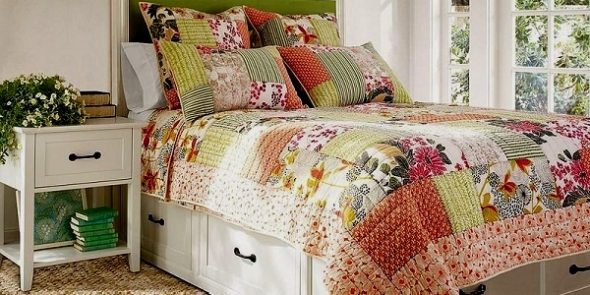
Patchwork patchwork style bedspread can be made with your own hands.
Seamstresses usually have in stock a huge number of patches left over from previous jobs. Combining them, creative people get unique things that reflect their creative view of the world.
Many independently make quilted bedspreads. Today on sale there is already quilted fabric. If sewing is a favorite thing, get cotton, silk or satin, synthetic winterizer, threads of the same color.
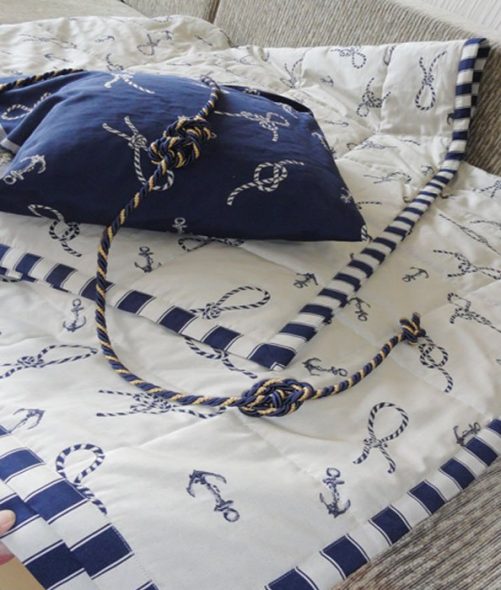
Quilt cover in nautical style handmade
The cover is made 3-ply. The upper and lower layers are made of beautiful fabric, the middle one is of synthetic winterizer. 3 layers combine, flatten, lay out.
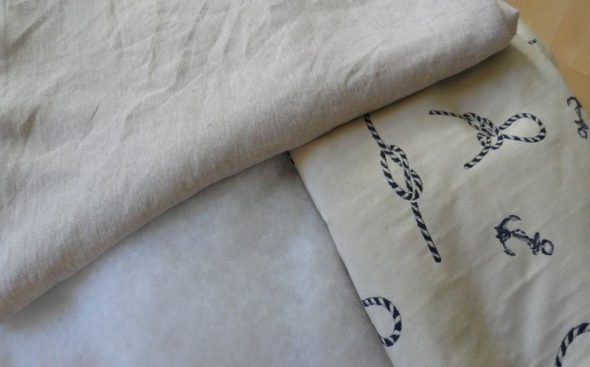
Material for a three-layer blanket covers
Then you need to quilting the resulting billet with a special foot.
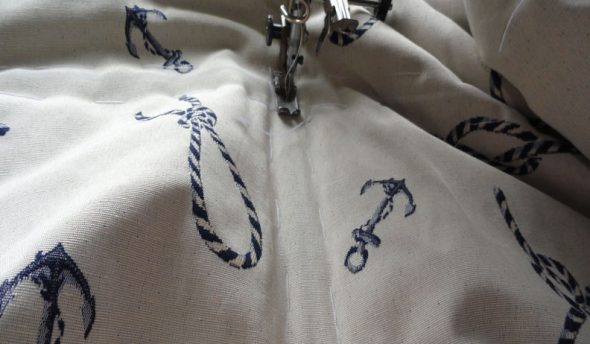
We make a line on the marked lines, quilting the entire blanket
The edges are closed with a bias.
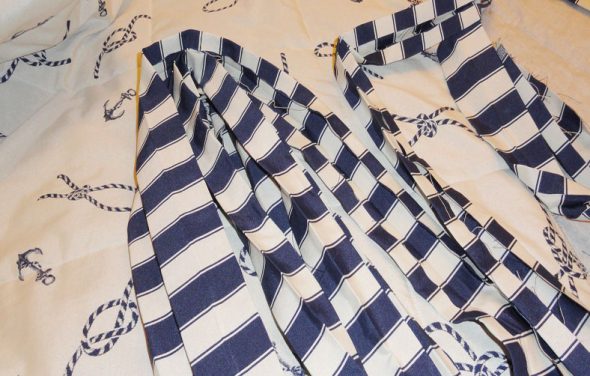
Making a pant of contrast fabric

We sew the piping around the perimeter of the bedspread
Recently, bedspreads connected with knitting needles have become popular.
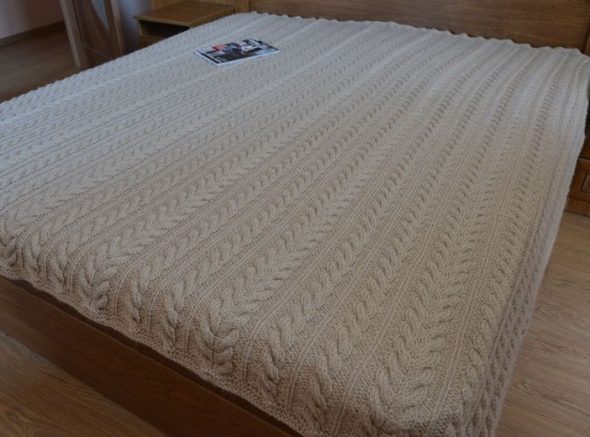
Cozy knitted plaid milk color handmade
The work is carried out according to the scheme of the picture, which came to mind. The edges of the knitted blank are folded, hemmed with a sewing machine.
Baby bedspreads
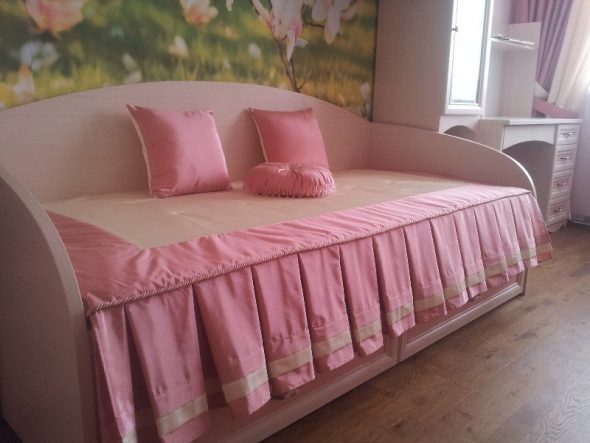
Beautiful cover with flounces for a bed of the princess
Little fidgets need safe beautiful things. Therefore, preference should be given to natural and mixed variations. The addition of synthetic fibers makes textiles less creased. Light colors are not suitable for the nursery. Even the most accurate baby will leave stains on textiles.
Some natural matter can provoke allergies. Therefore, wool should not be used in the nursery. Preference is given to cotton.
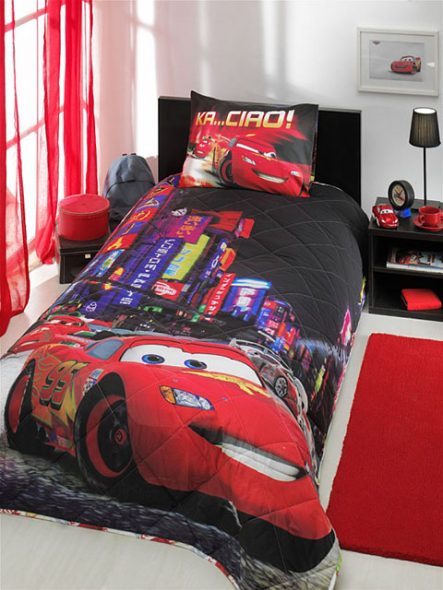
Quilted bedspread in the boy's room with your favorite characters
Covers Care Rules
Natural, artificial, blended fabrics require a special approach. If you do not follow the recommendations, wash, iron, not paying attention to the rules, the thing will soon lose its visual appeal. If you want to get a durable thing, you should start with the purchase of a veil of a famous manufacturer.
Extend the life of the blanket allows periodic hanging in the fresh air. Thing breathes, airs, dries well. When contamination appears, the cover is washed in a washing machine, then a more effective result will be obtained. The amount of linen should not exceed 0, 5 volume of the drum washing machine.
If things are stained, they are removed before washing. In order not to stretch the blanket, not to deform, it should be dried on a horizontal surface. Synthetics do not dry at high temperatures.
Wool needs a special approach. Woolen things protect from moths, high humidity. Stains are removed with a brush.
Conclusion
Making the bed is not as easy as it seems at first glance. In choosing, many are guided by individual needs, their own preferences. Practical hostesses recommended to buy textiles made of artificial threads. Natural fibers are chosen by people seeking maximum comfort.
Video: Sew a blanket on the bed with your own hands
50 beautiful covers from various fabrics in an interior:
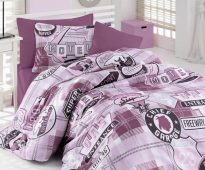 How to quickly fill the blanket in the duvet cover
How to quickly fill the blanket in the duvet cover
 Satin - what is this fabric for bed linen?
Satin - what is this fabric for bed linen?

